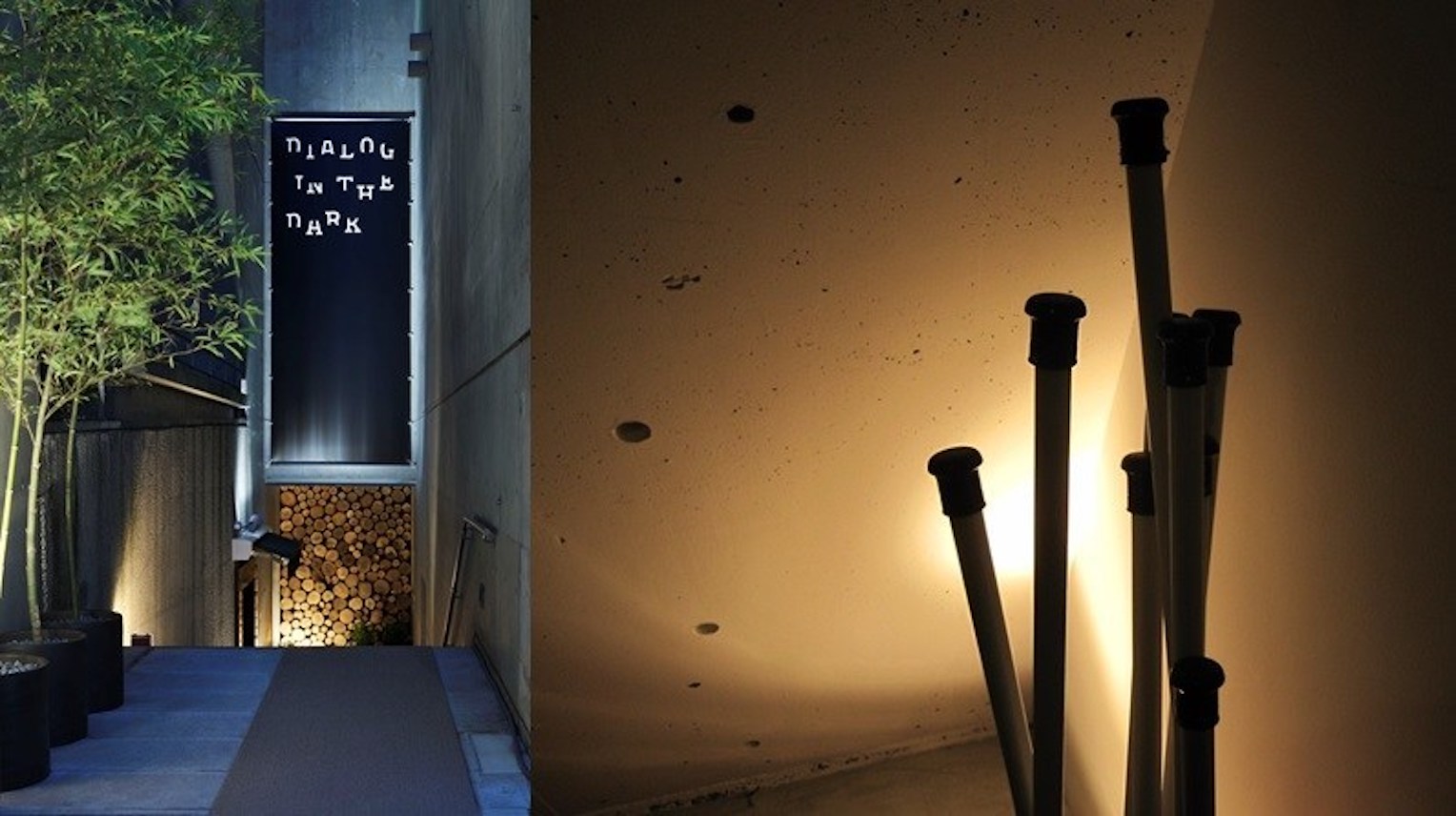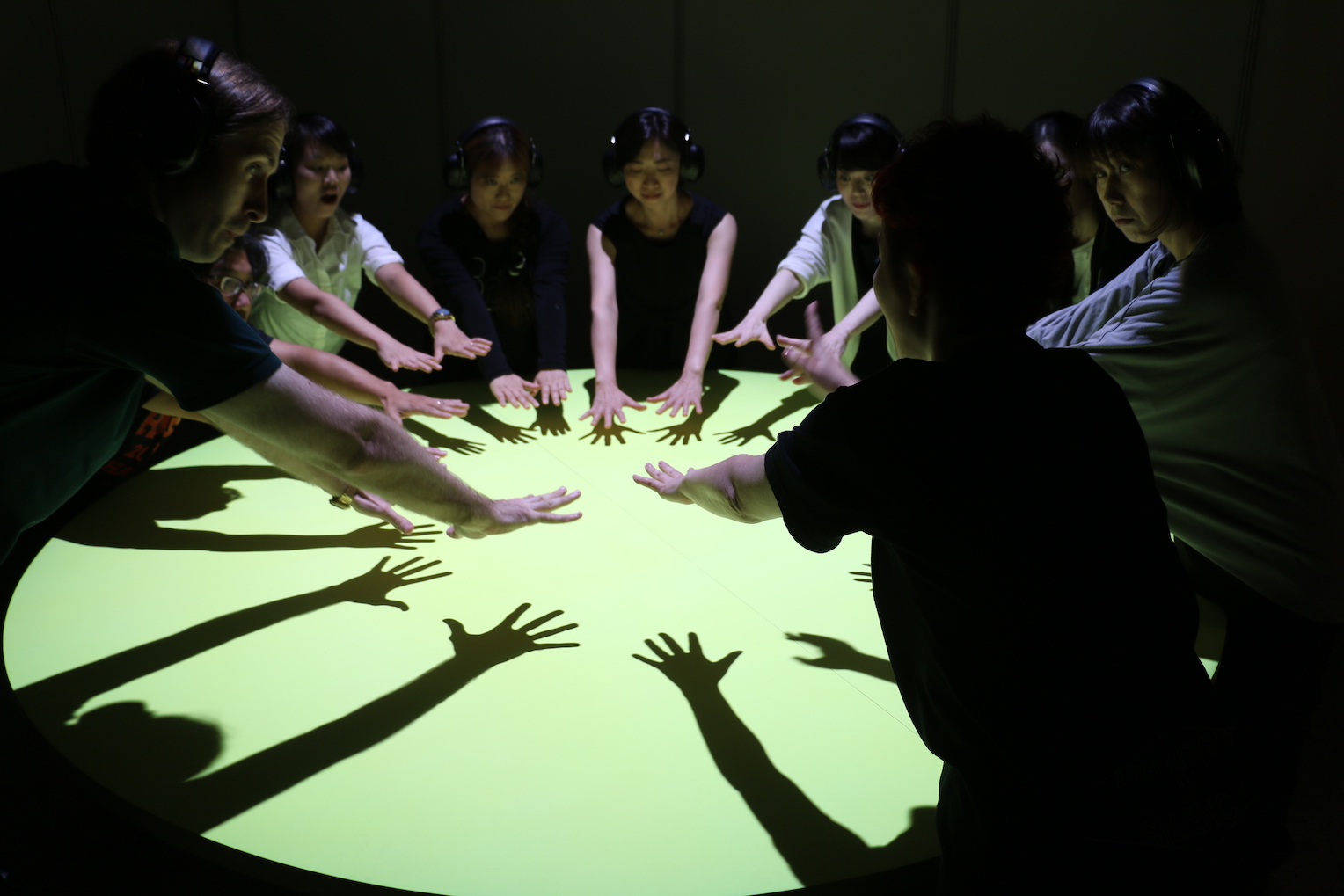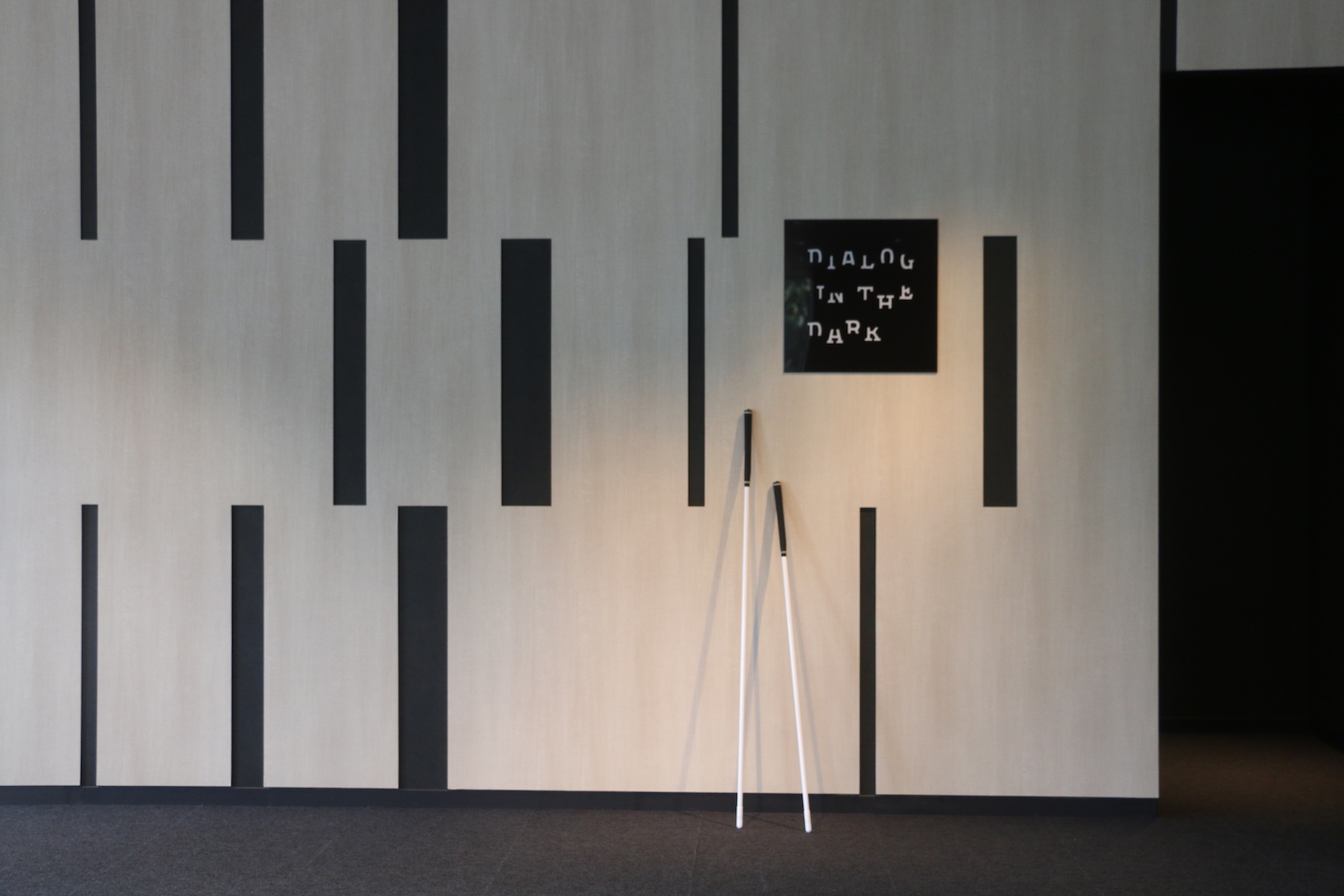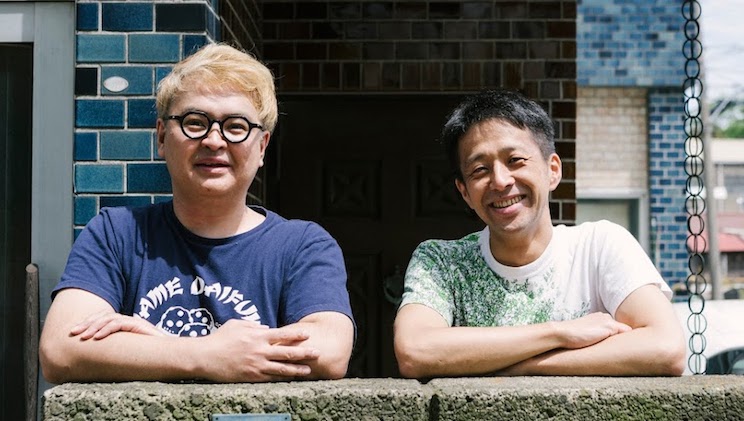A meeting of equals made in the darkness; the reason why Dialogue In The Dark Japan values “dialogue”.
A meeting of equals made in the darkness; the reason why Dialogue In The Dark Japan values “dialogue”.

"Dialogue In The Dark" (DID) has mobilized a total of 220,000 people across Japan since it was first started in Tokyo in 1999. This unique experience of being guided by visually impaired attendants in 100% pitch blackness has led many people to make new discoveries, notice old things, and make changes. In Japan, where one out of every three people, including senior citizens, are vulnerable (requiring support from someone else, or vulnerable to harm), what is the value of “dialogue” programs conducted by DID and other subgroups of the Dialogue Japan Society? We spoke with Mr. Shinsuke Shimura, creator of Dialogue In The Dark Japan, which has strong ties to the Nihonbashi area, as it has set up its base of activities “Tokyo Diversity Lab” in the neighborhood of Bakurocho.
Feeling value in “what cannot be seen”.
-Mr. Shimura, could you start by telling us how you first encountered DID?
My encounter started with a small article in the Nihon Keizai Shimbun newspaper in 1993. The article discussed DID held in Vienna, and I was deeply impressed by its description of visually impaired attendants guiding people in the dark. Japan was nearing the end of its asset price bubble, and Japanese society was only interested in what people could get for themselves and how companies could profit. I was working in marketing at the time, so all I could think about was how to deliver value in a visible format. However, the era of consumption had already passed in Europe. I was shocked to see that people were starting to find value in what cannot be seen, and were spending time and money on these things. I felt that Japan needed this as well.
-Was the environment around disabled people very different in Japan and Europe?
Yes, it was. Japan has braille blocks on sidewalks, and audio guidance in elevators, but most people hardly ever interact with the visually impaired, and visually impaired people are simply thought of as “pitiful people in need of help”. What makes DID unique is that the sighted people and visually impaired people trade places in the dark, so the visually impaired people once thought of as weak can instead help sighted people. Asymmetrical communication is commonplace in Japanese society - between parents and children, teachers and students, employers and employees – so I was moved by the sight of people encountering each other as equals in the dark.

Mr. Shinsuke Shimura, representative of Dialogue In The Dark Japan
-How did you manage to start DID in Japan?
I wrote a letter to the creator, Andreas Heinecke, and after several years of correspondence, received permission to start DID. During that time, I told my acquaintances about how wonderful DID is. At the time, haunted houses were the only kind of entertainment people could enjoy in the dark, so I found it difficult to get people to comprehend how revolutionary DID was for using the dark in this peaceful way, and I began to grow impatient. Then again, I myself had not yet experienced DID at that point, and when I tried it for the first time in Rome in 1995, I became quite lost in the dark. Staff came to help me right away, and in that moment I thought I must have been saved by somebody wearing night-vision goggles. Of course, it was actually a visually impaired guide who had helped me. The way I had imagined DID and my actual experience were completely different, and I realized how important it is for people to experience it themselves.
-DID was first held in Japan in 1999, is that right?
It took me several years to find a place to hold DID. It is not easy to make a room completely dark in Japan, because of the fire code. I was also concerned about how to get many visually impaired people to participate in operation, but by continuing dialogue in various places, I found a way to make it work. Starting with Tokyo Big Sight in 1999, I made total darkness and held events in venues all over Japan.

“Dialogue In The Dark” is led by visually impaired people trained as facilitators, in totally dark rooms with all light shut out. It is a precious opportunity for participants to experience the importance of dialogue and the value of all their senses in the dark. (Image provided by DID)
A place where people can work because of their differences.
-Please tell us the background of how you established a permanent venue in the Gaienmae neighborhood of Tokyo.
I was holding DID as a limited time event, and people were impressed by the ability of attendants to guide them through the dark, but once the event was over the attendants returned to their everyday lives. When I saw this, I began to have my doubts about the society we live in, where such highly capable people are limited in terms of what jobs they can do. That’s when I decided to make a place where the attendants can continue to work because of their differences rather than despite of their differences.
-Did you find a permanent venue right away?
It took a very long time. Not many people knew about DID at the time, and when I explained to people that there would be an indeterminate number of people wandering around in the dark and that tens of visually impaired people working there, they made conditions for entry stricter and stricter (Laughter). DID is already held in 50 different countries, and in most of them it is funded with taxes as a sort of next generation education. In Japan, DID is sometimes run by the private sector, so we faced many difficulties.

The Dialogue In The Dark permanent venue in Gaienmae, Tokyo, where it operated from 2009 to 2017. (Image provided by DID)
-DID also started running corporate training programs in parallel with the permanent venue, is that right?
Yes. Conventionally, top-down communications based on instructions from superiors has been considered most efficient in organizations. However, after being involved with DID for so long, I realized that by having proper discussions between all members working on a project at the initial stage, work progresses faster, and even when there is an issue, members can cooperate smoothly to solve it. It takes an extremely long time for the diverse people working in an organization to understand each other through dialogue. However, organizations are stronger when they have a structure built where the leader can become a follower and the followers can become the leader, instead of the same person exercising leadership all the time. DID is an excellent opportunity to build trusting relationships through dialogue, and when corporations participate in DID workshops, the attendants can tell which companies are building trust relationships and which are not.
-The dialogue-focused “Museum of Diversity and Inclusion” is scheduled to open in Takeshiba, Tokyo in July 2020. Can you tell us more about this?
Our permanent venue in Gaienmae had to close in 2017 because of rents rising ahead of the upcoming Olympic and Paralympic games. Since then, we have started holding “Dialogue In Silence”, where we hold dialogues in silence with hearing impaired attendants, as well as “Dialogue With Time”, where we hold dialogues about ways of living with senior attendants who have a wealth of experience. Following these activities, we decided to make a museum where people can experience all three programs, as a place to provide opportunities for dialogue where anyone can encounter each other as equals, and both the attendees and attendants can grow together.

“Dialogue In Silence” is an experience where people put on headsets that shut out all sound, so they can enjoy dialogue that goes beyond the language barrier, with guidance from hearing impaired attendants. (Image provided by DID)
What change is brought by equal dialogue?
-When you experience DID, you realize that “dialogue” is not only communication through language. How does DID understand “dialogue”?
There is no single correct answer to the question “What is dialogue?” Everyone has their own view on what dialogue is. I see our mission as posing the question “What is dialogue?” to society, and I hope to make as many opportunities as possible for people to have equal dialogue.
-What value does “equal dialogue” have in modern society?
I think that dialogue is not something you simply do to make people comfortable or get them to agree with you, but rather it starts with a feeling of incompatibility or discomfort with someone other than yourself. There is always a gap between yourself and other people, due to differences in age, sex, culture, religion, social system, or even your way of life or perspective on work. I think one meaning of dialogue is to understand that difference and get more aligned with the other person’s identity or story.
In modern society, many small groups have been formed by people with similar values who will “like” each other’s posts on social media, and people get comfortable in these groups. These days people can find only the information they want to find, and shut out everything else, so opportunities for people to experience other people’s ideas and values are precious indeed. So, I think at DID, I want to provide a space where people can set aside their smartphones and titles to have a dialogue with each other in the darkness and silence.


DID also conducts workshops where people solve problems in the darkness in collaboration with others, and these workshops are used by corporations and organizations. (Image provided by DID)
-It seems like experiencing dialogue this way would bring a lot of changes to people internally and their view of society.
Interestingly, many people who have experienced DID feel that they encounter disabled people more often on the street. Of course, there were always people with white canes or wheelchairs out there, but by experiencing DID, people realize that they treated disabled people as though they did not even exist. The changes brought by dialogue in the dark are not like those brought by one-sided discussion, where one party simply cajoles another. Rather, it arises from acknowledging each other and searching for possibilities to build a bridge between oneself and another, and I think that’s what makes DID truly interesting.
-Change and mutual understanding through dialogue seems like they would lead to the sort of “collaboration” cherished by “Bridgine”.
I agree. With regard to collaboration, we have developed collaboration products with Imabari towels and Aizu lacquerware, utilizing the tactile sense of visually impaired people, which is superior to that of sighted people. Through these collaborations, I hope to create products for the general public, not specifically for disabled people, so we can convey the great value that disabled people have to offer society.

Aizu lacquerware “Meguru” created with a commitment to “superior texture”, through dialogue between Aizu lacquerware craftsmen and DID attendants.
Sensitivity and diversity unique to Japanese people.
-The experience of setting aside your titles to step into the darkness is akin to a samurai setting aside his sword before stepping into a room full of threats. Just as the author Junichiro Tanizaki wrote about the sensitivity to find beauty in darkness in his essay “In Praise of Shadows”, I think DID is highly compatible with Japanese culture and aesthetics.
Yes, definitely. In fact, DID conducted in countries other than Japan simply use the content of DID as it was developed in Germany. Yet, when I experienced DID, even in complete darkness I found it difficult to pick up a fake flower and say “This is a flower.” I think the sensibility of Japanese people is delicate enough to that we yearn for the real feeling as our hands remember it, even when it comes to the details of things in the dark. For that reason, DID in Japan uses real flowers and fallen leaves, and even incorporates culture and seasonal experiences always present in Japanese culture. At New Year’s, we do special calligraphy for the holiday in the dark, and in the summer we enjoy the sound and smell of sparkler fireworks, sharing our impressions with others.

In November 2019, we opened the new facility “Uchi Naru Bi, Totonou Kurayami.” (Inner beauty, revealed in the dark) in the “Mitsui Garden Hotel Jingu Gaien no Mori Premier Hotel. We use mindfulness based on Zen philosophy to provide a two-hour program where people can experience nature and Japanese culture. (Image provided byDID)
-It’s interesting that Japan is the only place to have modified the original program from Germany.
Japanese people are good at modifying things imported from abroad so that they are more comfortable for us. There may be some influence from religion, but Japanese people have the depth to accept many different things. We have a strange way of accepting unparalleled diversity, as we visit Shinto shrines for New Year’s, graveyards of Buddhist temples for Bon, and go to church at Christmas, and I think this is actually a very important skill in a global society where diversity and inclusion are keywords.
-The 2020 Tokyo Olympic and Paralympic Games seem like they will be great opportunities to show the world Japan’s unique diversity.
I certainly hope so. There are 10 years left until 2030, the deadline for the Sustainable Development Goals. I hope to progress toward achieving goals with diverse partners over the next 10 years at our base “Museum of Diversity and Inclusion”, which is due to open soon. 10 years from now, children who experienced DID in fourth grade will already be adults. Currently, 65% of DID participants abroad are elementary and junior high school students who will create the society of the future. By opening “Museum of Diversity and Inclusion”, many more children in Japan will also be able to have this experience, and if they experience DID when they start to notice differences between themselves and those around them, it should have a great impact on their life afterwards. I think firsthand experience of exchanging the strengths and weaknesses between different people will be crucial to educating the next generation. I intend to focus my effort on educating attendants who will operate “Museum of Diversity and Inclusion” in the future. Including senior citizens, one in three Japanese people is vulnerable, and I want to help them reestablish an equal relationship with the rest of society.

Local communities created through dialog.
-Tokyo Diversity Lab, which hosts “Dialogue Attendant Schools” to train dialogue professionals, is located in Bakurocho and has a deep connection to Nihonbashi, isn’t that right?
Yes. We had a preparation room in Nihonbashi Honcho for our permanent venue in Gaienmae, and I found the people in Nihonbashi to be very friendly to us. Social projects like DID aren’t intended to make money and keep growing larger, but rather place an emphasis on building social capital, which is to say human relationships. Nihonbashi is a neighborhood where you can really feel the enthusiasm and warmth to drive such an effort. It was historically the heart of Tokyo culture in the Edo era, making it an easy place to incorporate the Japanese culture we spoke about earlier. I really feel the potential of Japan when I find such a hot place in the heart of a huge city like Tokyo.
-This place is also the venue for corporate training programs, right?
Yes. Our goal with these programs is to affect “change” in people, but in order to change, we have to shift down from top gear to neutral. In that sense, I think Nihonbashi is especially well-suited for our activities, because it feels like a particularly neutral place in Tokyo.

The “Dialogue Attendant School”, which is aimed at training visually impaired, hearing impaired, and senior citizens over the age of 70 to “change society through dialogue” through 12 lectures and workshops over the course of 4 months. (Image provided by DID)
-It seems that regional characteristics shouldn’t matter much once you have turned off the lights, but that’s not necessarily the case, is it?
This might surprise you, but darkness has a different texture depending on the location. Even within the same space, it can change depending on the time of day, and the feel of particles is different on days when there is a full moon and days when there is a new moon. Japanese people even call different shades of black “greenish black” or “reddish black”, so they are sensitive to such differences. For that reason, I want to cherish the darkness, which is neutral and comfortable. Whether it is at our new facility in Jingu Gaien which we opened last year, or our base in Bakurocho, we can create a good darkness with a strong sense of stability.
-Finally, can you tell us about the relationship between DID and the local community?
I think that after setting up our permanent venue in Gaienmae, convenience stores in that area probably became the most compliant with universal design in all of Japan. On snow days, people on the street remove snow from Braille blocks all on their own. I suppose people in the neighborhood and visually impaired staff members who meet each other every day have built a comfortable relationship with each other. This is different from the relationship with “pitiful people in need of help” that I described at the beginning, and I think it makes for a more livable city for everyone because a sense of mutual consideration has spread throughout the area. I feel that DID can accelerate the development of this situation, like a catalyst for the city.

(Image provided by DID)
Interview/Text: Yuki Harada (Qonversations)
Photography: Daisuke Okamura
Dialogue Japan Society
Dialogue Japan Society is the only organization in Japan to conduct “Dialogue In The Dark”, “Dialogue In Silence”, and “Dialogue With Time”, licensed by “Dialogue Social Enterprise GmbH”, which develops entertainment in the dark such as “Dialogue In The Dark”. In addition to holding “Dialogue In The Dark”, Dialogue Japan Society also engages in corporate and organizational training centered on workshops in the dark, as well as the development of products and services that utilize the skills of visually impaired people. The play to open the “Museum of Diversity and Inclusion”, where visitors can experience “Dark”, “Silence”, and “With Time”, in Takeshiba, Tokyo in July 2020.
Dialogue Japan Society is taking entries for “What is your #dialogue?”, in preparation for the opening of the museum until February 29th (Saturday) 2020. See the dedicated website for details.




